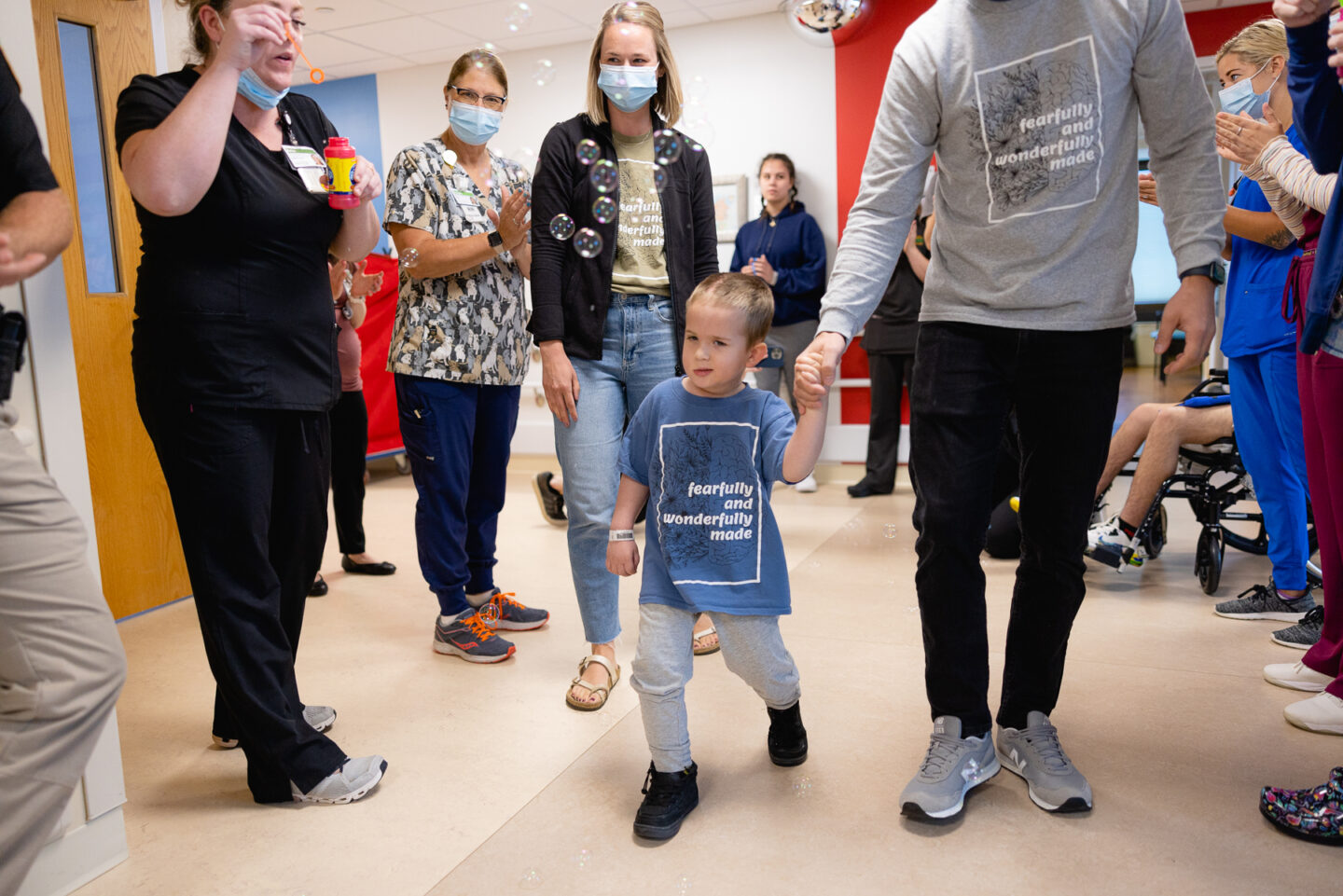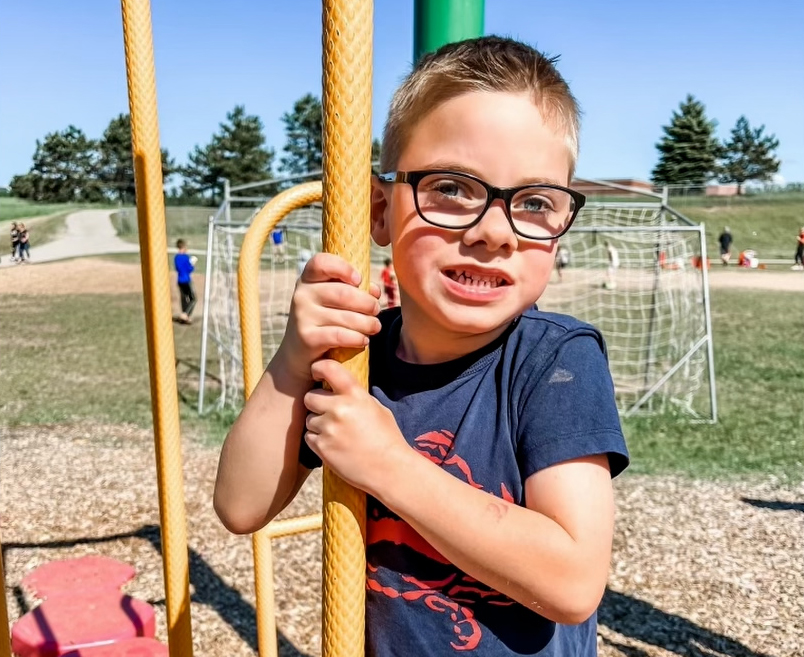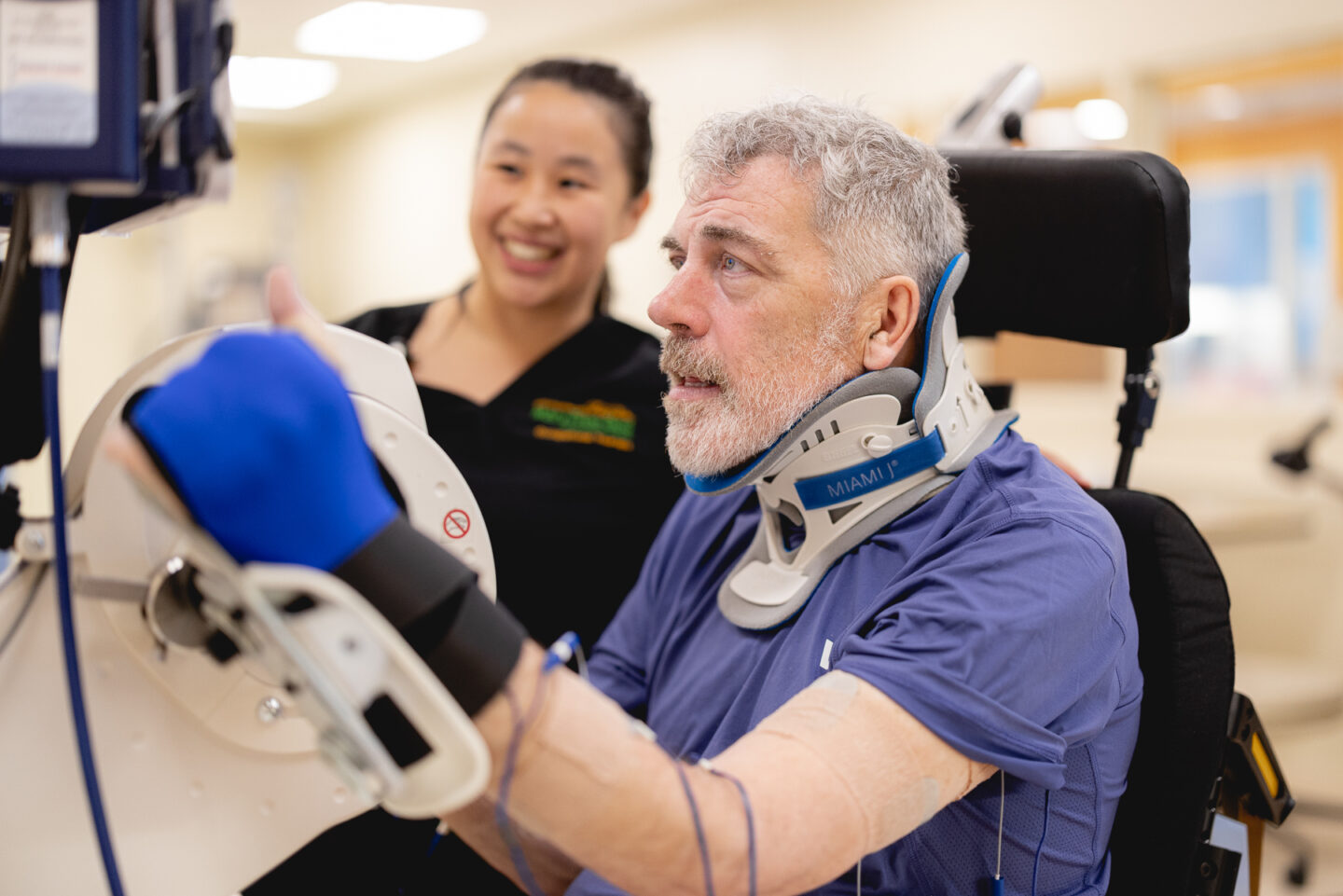Posted on December 28, 2010
Mary Free Bed polio patient from the late 1930’s recounts his experiences in autobiography
by Maureen McKenzie
Max Harrell, a former pediatric Mary Free Bed patient, wrote his autobiography to share with his kids. Max generously provided a copy to Mary Free Bed, saying; “I didn’t put much in it about Mary Free Bed. If I had it probably would be about a thousand pages long.” Below is a summary of Max’s story.
Max’s Illness
Max turned 85 this past April and is happy to be able to celebrate his birthday, unlike so many of the young men he met at Mary Free Bed’s polio clinic as a boy. Many of his fellow patients never left the clinic.
Raised on a farm and driving the family truck by age 12, Max was a self-sufficient young man. Second oldest of six kids, he was a responsible boy who helped friends, neighbors, family, and animals. He was your guy, whether it was swinging a punch for the person who couldn’t or driving into town to get the vet to save the family plow horse.
A neighbor asked Max, then just 12 years old, to teach her son to drive. Max took his neighbor’s son out to the harvested hayfield and gave a thorough driving lesson. On the drive home, because the lesson had gone so well, Max allowed his neighbor to drive. The car hit a sandy patch and slid off the road. The accident wasn’t too bad – Max walked away with just a lump on his knee.
That seemingly innocent lump became more than a warning for safer driving. The lump turned into a carbuncle, and later to a fever.
For the next couple months Max would worsen to such a state that his family thought they were going to lose him. Then miraculously, the fever began to fade. By Max’s birthday that April, he was able to be carried outside for the first time in months.
Max’s fever left him unable to walk, but with no other signs of illness. It wasn’t until that fall when re-entering school that the school nurse told his family they should take him to Butterworth Hospital. Max stayed in the men’s ward at Butterworth and was diagnosed with osteomylitis, an infection of the bone or bone marrow.
The hospital was 80 miles from his home so his mother would hitchhike, leaving early in the morning and arriving late in the afternoon to see her son. His mom stayed with Max until his bedtime then began the journey all over again the next day, until one of the nurses offered Max’s mother a place to stay.
Because of the arduous journey, Max spent many nights alone, even signing off on an emergency surgery for himself. That winter he was transferred to Mary Free Bed’s polio clinic, where he was finally able to be with other kids his age.
Max’s Recovery
Max Harrell had his ups and downs while he was a patient at Mary Free Bed.
He struggled with issues of death, present sacrifice for future promises, and pain. Max had multiple surgeries. One surgery left him with a large hole in his hip that had to be cleaned and drained on a regular basis, which Max describes as excruciating.
Watching new found friends from the clinic leave on stretchers was dreadful, but Max never allowed himself to believe that he would leave Mary Free Bed the same way. He believed he was going to get better.
Max was a Mary Free Bed patient for three years. He remembers a “feeling of family, of being loved” from the staff and volunteers who came through the clinic.
At the end of his third year at the polio clinic, Max was allowed to spend the summer at home. He was determined to get better. Though he was able to walk with crutches, he smashed them and learned to walk without them.
When Max went back to the doctor for an evaluation and to be re-admitted to Mary Free Bed, he shocked everyone by walking into the clinic unaided. The doctor sent him home for good in August 1941, at the age of 16.
Max is a medical oddity, from his recovery from the initial fever to his determination to walk. In 1939, while still at Mary Free Bed he was even a case study in a doctor’s conference for his astounding recovery.
“Some people say to me, ‘you sure have had a rough life,’” Max said, “But they don’t know what a wonderful life I’ve had. I give Mary Free Bed a lot of credit for that.”
Max’s Life After Mary Free Bed
Max went on with his life, though the years at Mary Free Bed left him behind in school. He worked hard. Through odd jobs and favorable investments Max made a life for himself and for his family.
Max and wife Leona have four children, and have watched them all marry and have children of their own. They actively visit with all, though Max will occasionally accept an offer to have help carrying his luggage to the door.
In 1979, following a couple rough winters getting around, a friend recommended a hip replacement. Max was excited to be able to walk well again, a point of pride after his illness as a young man. He sought his doctor’s advice, and much to Max’s disappointment, his osteomylitis history, which made being able to walk so important, would hold him back from being a hip replacement candidate.
Max’s hope was restored a few years later when he found a surgeon willing to do the surgery. Max would have a replacement first for his healthy hip and then the other, which since Max was 12, had remained a quarter inch shorter from his illness.
The first surgery was a success. A year and a half later, in 1983, when Max had his second surgery, he stood on legs that were the same length for the first time in more than 45 years. Max re-gained some of the mobility in his hips thought to be permanently lost.
In 2001, Max took a spill in his garage that would bring back his bone weakness. He broke his artificial hip in the fall; when the doctor was replacing the hip, the bones splintered.
The doctor had no choice but to put a rod in Max’s leg that runs down to his knee. Rather than the six weeks of recovery that was anticipated, Max was in the hospital for two weeks and then in a hospital bed at home, unable to bear weight on his leg, for six months.
But this wouldn’t be Max’s story if that had held him back.
“On the wall I had a plaque that said: ‘I complained because I had no shoes until I met a man who had no legs.’” He used the time in bed to sit with a friend and design a pontoon boat. By the time he was done recovering, the boat was designed, measured, cut, and ready to be taken to the lake to be assembled.
Max finished his autobiography in 2007. On the final pages he includes pictures of his children, siblings, grandchildren, and other family members.
“I’m going to talk to St. Peter and see if I can contract for eight more years,” Max wrote. So far, he seems to have received that renewal.





